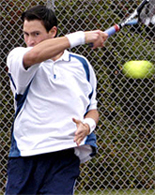Winning Pretty:
Introduction
Chris Lewit
In today's technologically focused world, the internet and social media are revolutionizing the way athletes learn and how coaches and players share knowledge about technique.
High-speed video is an innovative, game changing tool to analyze and correct technique. Researchers like Brian Gordon--and others at the university level--are using 3D motion capture systems to investigate biomechanical phenomena at a deeper level than ever before. It's an exciting time to be a technical coach, technophile, or techniquephile, and there are many avenues for the average person to learn about high level technique.
Yet tennis players, parent-coaches, and coaches are frequently overwhelmed with a tidal wave of information online, making it difficult to discern the best way to build strokes and movement. It may be possible to learn good technique from YouTube, Instagram, and online courses, but there is a multitude of conflicting and confusing information.
I have worked with many players, parents, and coaches led astray by following online tennis sources with dubious validity. On the bookshelf, there are a lot of books about general tennis subjects, but few thoughtful and accurate books describing how to build cutting-edge, world-class tennis techniques.
Books that are out there generally convey outdated, anachronistic information geared toward recreational players, or they teach modern techniques inappropriately in detrimental or incorrect ways.
Some sources demonstrate good modern techniques but fail to recommend a viable and efficient pathway to build or reconstruct such skills. Sifting through the abundance of information both online and offline to find sage advice about technique is a daunting task. I feel there is a powerful need for a better way to understand tennis technique that is simple, engaging, and utilitarian.
This new series of articles entitled Winning Pretty--and the book that will follow--will explain biomechanics in an easy to understand way, without excessive jargon or hype--and offer a clear pathway to teach and learn elite technical skills.
Invention
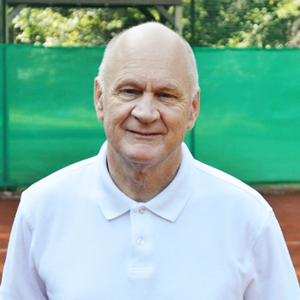
With the invention of video analysis and motion capture technology, biomechanists can study techniques in ways that were not possible before. Researchers can determine the optimal ways to move and hit a tennis ball using an evidence-based approach that was never feasible before these technologies existed. Tennis could now be entering a golden age of technical analysis because these new technologies have the potential to identify and analyze joint and body movements in exquisite detail and calculate the forces created by different techniques.
Starting in the 1970s, Vic Braden was one of the pioneers in trying to bring physics and scientific rigor to the process of teaching technique. Steve Smith, one of Vic's coaching proteges, has carried on that philosophy to this day.
John Yandell has dedicated his career to studying professional techniques, disproving many long-held technical myths and constructing stroke models with evidence from high speed video analysis. Brian Gordon's biomechanical analyses of the serve, forehand, and backhand--using 3D motion capture technology--has transformed the way many coaches view and develop stroke mechanics. Mark Kovacs has created an excellent eight stage model of the serve that has influenced countless coaches on how to build that important shot.
Sport science is also starting to play a role in shaping how teaching organizations and federations teach coaches. Many progressive coaches themselves are students of the biomechanics and physics of tennis technique.
Kinetics, kinematics, biomechanics, physics applied to tennis strokes, and high speed video analysis can play a crucial role in influencing how technique is built in the modern era and these scientific methods may eventually act as a final arbiter to resolve disagreements among coaches and players about what is the correct way to swing or move on the tennis court.
Beautiful
Beautiful, elegant, effortless-looking tennis technique! It's the goal that everyone in the tennis world--players, coaches and parent-coaches--all dream about. Winning Pretty is dedicated to achieving graceful technique that is also functional. The goal is to convey a method for building world-class techniques with those qualities that not only look good--but win.
Winning Pretty technique is efficient, rhythmic, fluid, balanced, and elastic--never jagged or forced. As the legendary coach Pato Alvarez once said, "It's fine to play pretty and strong, but only if the player is solid." What he means is that panache is not a substitute for substance. A player can't be flashy without consistency. "Substance, not sizzle," as top American coach Steve Smith likes to say.
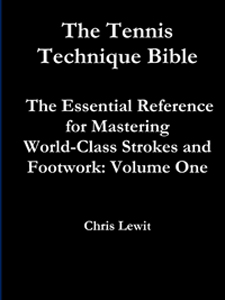
The Bible
In 2009, I wrote a technique book titled The Tennis Technique Bible. The book was my first, and I was very proud when it was completed. It was the crystallization of my tennis technical teaching system at that time. (Click Here to Order.)
My mentor, Israeli Davis Cup player and professional coach Gilad Bloom, shaped my vision of the game during that era. Recently, looking back and rereading that book, I saw many areas of technique in the modern pro game that have evolved since that book was published. I decided to embark on a new mission to make an updated, more practical, and engaging approach that explains how to build modern tennis technique. That was the genesis of the Winning Pretty project.
Three Core Tenets
There are three core tenets of the Winning Pretty philosophy:
- No Old School Dinosaur Techniques
- Keep It Simple
- Use Evidence Based Guidelines
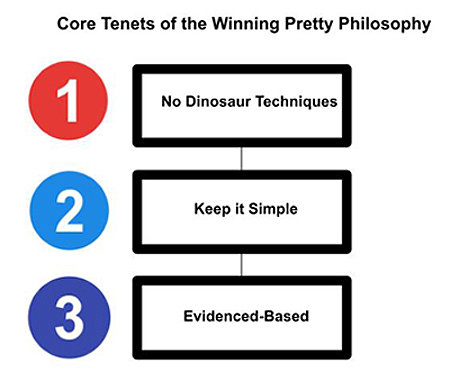
No Dinosaur Techniques
A key tenet of the Winning Pretty philosophy is that technique should be built for the future with the technical evolution of the modern game always in mind. Sometimes I call old-school strokes dinosaur techniques. Stiff, anachronistic strokes found in tennis guidebooks from the 1970s and 1980s are still commonly taught at most clubs around the world. Coaches at the grassroots and developmental levels teach what they learned back in the day more than current or future trends on the professional tour. This is a common mistake.
Tennis technique myths abound, with coaches often dispensing faulty information unsupported or contradicted by available evidence. Movement skills are also commonly neglected at those same clubs.
Footwork and movement training are avoided because many kids simply don't like to move their feet--and they complain about that type of teaching. Understandably, coaches at a club don't want to lose their lessons or job from these complaints, so the teachers often customize their lessons to deemphasize critical movement skills.
There is an essential need to evolve technical tennis coaching at the developmental level around the world--to build a great base, as Steve Smith likes to say--especially at the introductory level where young players have their first exposure to technique building and footwork training.
But what exactly is a great base? What grips? What stances? What swing shapes? What movement patterns? These are some of the issues we will discuss in future articles.
Adults
Middle-aged and older adults also have the right to learn or relearn beautiful modern strokes and movement if they desire to upgrade their games. They shouldn't have to play with dinosaur techniques either, and for many adults, learning cutting-edge skills is a lifelong passion that keeps them young and engaged in tennis. Winning Pretty offers a guide and pathway to escape old-school, dinosaur teaching for everyone.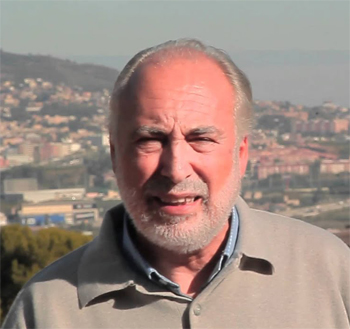
Keep It Simple
A second important element of the Winning Pretty philosophy is that flowing, attractive technique cannot be erratic--as Pato Alvarez decreed--and also should not be overly complicated. Good technique should be sophisticated only when necessary.
A fundamental design principle in my work and philosophy is that complexity for complexity's sake is not helpful. These articles will include many relevant biomechanical keys to tennis strokes and cite important biomechanical research, but every coach, player, and parent must understand that building beautiful and functional world-class technique should be as simple a project as possible.
As I have learned from many years studying tennis coaching in Spain, keeping the technical engineering simple can save time in the development process, and saving time can be very valuable. "Time is money," as they say in my hometown, New York City.
Another long-time mentor and Spanish coaching legend Lluis Bruguera likes to say, "Tennis is a simple game, don't overcomplicate it!" Simple, fluid, functional yet elegant technique is the goal of the Winning Pretty method.
Evidence Based Approach
Thirdly, building technique according to Winning Pretty means that training should be based on research and evidence whenever possible. As a student of kinesiology (human movement) and biomechanics, I value an empirical and science supported approach to shaping technique, but I also recognize that in many instances we do not have enough tennis sport science research to support every recommendation or method.
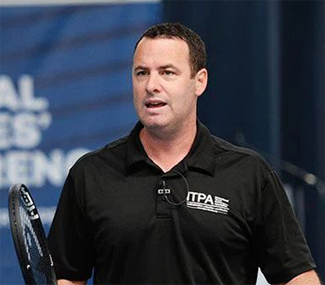
I have leaned heavily on the research of top sports scientists in the tennis world, such as Mark Kovacs, Brian Gordon, Bruce Elliot, Machar Reid, and Miguel Crespo. John Yandell, one of the leading tennis technique analysts in the world has also had a profound influence on my coaching and my technical perspective on the game.
Mark Kovacs has always stressed to me that tennis should be coached in an evidenced-based manner, whenever possible. That message has resonated with me and shaped my philosophy. When I attend USTPA, PTR, and ITF conferences, I am always drawn to sports science and biomechanics presentations.
Despite some progress, there is still a dearth of tennis research—especially biomechanical research--in many important areas of the game. Therefore coaches must trust, to a certain extent, their experiences to guide them combined with the available research data. High-speed video analysis can act as a bridge, providing empirical support for a methodology when no quantitative research exists.
I have fashioned a philosophy and approach for teaching technique in this book that is based on evidence whenever possible yet forged from the experiences that I have had coaching in the trenches for over 25 years and learning from some of the legends in the coaching world.
Art and Science
Science and experience intertwined have helped me form an effective method to build pretty, world-class, winning technique. I am grateful to the many leading coaches who have had an influence on my technical approach. I have learned from American legends like Nick Bollettieri, Robert Lansdorp, Rick Macci, and Steve Smith.
Gilad Bloom--my former private coach--is truly a tennis technical surgeon who has had a profound influence on my methods. He is the most effective builder of technique I have ever witnessed. Spanish coaching titans like Lluis Bruguera, William Pato Alvarez, and Toni Nadal have also shaped my coaching philosophy.
I have tried in this book to take the collective wisdom from coaches and mix them with the logic, rationale, and objective scientific research of the best sport scientists we have in the tennis field in order to present a coherent and empirically supported method for building beautiful and effective technique. Absolute scientific truth is rare in tennis. Rather, truth is an amalgam of science and art based on available data and real-world coaching experience.
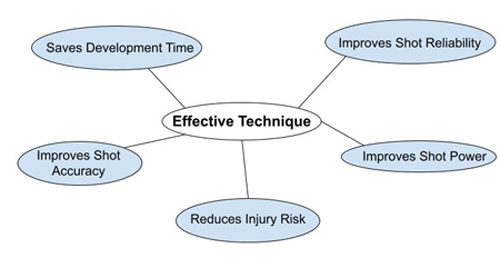
Five Benefits of Effective Technique
There are five benefits of effective technique that are also important considerations when building or rebuilding tennis technique:
- Reduce The Risk Of Injuries
- Enhance Efficient Force Production
- Save Time
- Reproduce The Same Shots Reliably
- Build Accurate Strokes And Movements
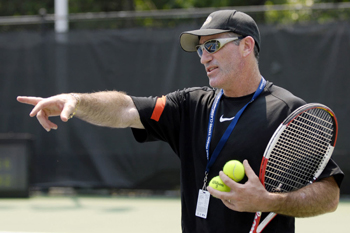
Winning Ugly and Winning Pretty
The Winning Pretty method also harmonizes the diametrically different points of view between tactically focused development and technical prioritization into a reasonable and moderate approach that bridges the philosophical divide. It's cool to win ugly and I love Brad Gilbert's book, Winning Ugly. (Click Here for one of Brad's articles on Tennisplayer.)
It's a wonderful book full of tactical and psychological insight, and it's a classic in the tennis world. Everyone should read it.
Brad and I have a tennis connection because I have coached Gilbert's nephews, who are talented tournament players. I have great respect for Brad, who has one of the sharpest coaching minds in tennis.
But the perspective and advice in that book is definitely a tactician's approach to improving tennis rather than a technician's philosophy. I have always told my students though—that if I had a choice--I would prefer to win pretty rather than win ugly. How about you?
Winning pretty for me means optimizing technical and movement performance in order to allow a player to maximize his or her potential and truly be able to take advantage of the tactical insights of coaches like Brad.
As a development coach, I believe most players can develop relatively pretty, biomechanically sound strokes and graceful movement. There may be a segment of players who have funky strokes and awkward movements on the court--who still win--but it is a small percentage of players. Daniil Medvedev is a good modern example of that type of player on tour.
Winning Pretty argues that the majority of players can and should develop efficient technique with elastic and smooth movements that are, coincidentally, visually appealing.
Effective technique can be rhythmic, fluid and pretty, which is a pleasant result of smart technical engineering rather than a superficial exercise of vanity. I have a healthy respect for unorthodox players who are psychologically gritty, tactically cagey, and win ugly while always striving to build pretty, elegant, elastic movements that maximize the player's winning potential.
The Art of Coaching and Learning Tennis
The Winning Pretty method is supported by science but accepts that players may develop their own stroke and movement skills unique to their anatomy, physiology, and predilection. John Yandell says that coaching is, ideally, an art form blending science with the coach's experience to build the optimum skill set for each individual player.Says Yandell, "The coach is an artist, who can use empirical methods to form technical parameters, but ultimately each player's style is individual to them, regardless of the scientific merit of a technique." For coaches, you will have to decide whether you believe this to be true or not. Athletes are artists too. For players, you will have to balance your intuition against biomechanical insight.
Many in the tennis world still operate in the "dark ages," as Yandell describes it, resistant to or ignorant of quantitative and video analysis. On the other end of the spectrum, some coaches and players bow to science and value only one rigid mechanical form with no room for individuality, which can be described as the "tyranny of science," as Yandell calls it.
Winning Pretty argues for a middle way, striking a balance between an extreme quantitative approach and intuitive coaching and learning based on feel and experience. The Winning Pretty way informs and supports the art of coaching and learning the game. The principles and parameters in these articles can assist coaches in their teaching but also players as they learn or fix techniques.
My Vision
My dream would be to help coaches teach techniques more efficiently and to upgrade the technical development of players worldwide by building a beautiful great base for young and old, to help reduce the amount of injuries at all levels, and to develop tennis players--from recreational to competitive--who win more.
Pretty and effective strokes and movement can make the game more enjoyable, and they improve the longevity of players who will be able to play longer and into older ages with elastic and efficient mechanics.
Learning world-class form is accessible to most people who are willing to dedicate time and focus to the endeavor. I want those people to learn effective techniques in as minimal time as possible. I want Winning Pretty to be a useful guide for players of all levels and ages to improve the experience of playing tennis, which for many is a very frustrating sport.
Another key goal of Winning Pretty is to help coaches by sharing an efficient method for teaching technique that is evidence-based but not overly complicated, cumbersome, or time-consuming. I can imagine a future tennis world featuring players with better form and lower participant injury rates, where players enjoy the game more because they can control the ball better and have longer rallies, which are fun. That future looks pretty good!



